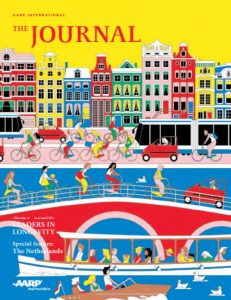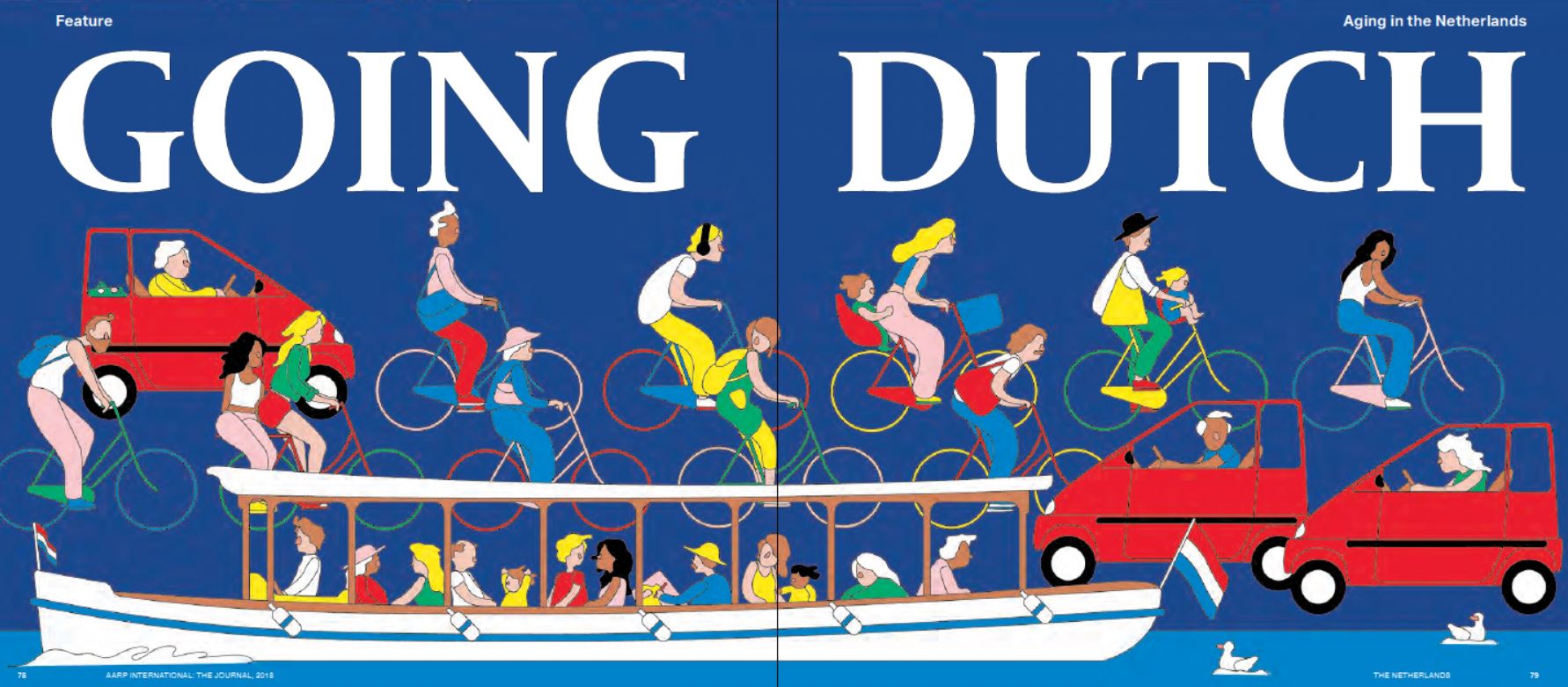People across the globe share many of the same wants and needs as they grow older. This is why the AARP, America’s largest organization dedicated to empowering seniors to choose how they live as they age, also looks abroad for inspiration, innovations and insights. In the annual publication The Journal, the AARP showcases thought leadership around the globe concerning all issues related to ageing, to share promising ideas so that others might be inspired and even build off them. Each year, a specific country is explored in-depth to better understand its approach to the ageing challenge. After Japan in 2018, the AARP now decided to focus on The Netherlands, one of the small, innovative economies featured last year in the AARP’s Ageing Readiness and Competitiveness Report.

Cycling, volunteering and pickled herring
The special feature in The Journal offers a multifaceted image of ageing in the Netherlands. In a prologue, Hugo de Jonge, the Dutch Minister of Health, Welfare, and Sports, discusses how ageing in place, nursing care, and social isolation are all connected, and explains how the government aims to empower civil society, social enterprise, and companies to work together to improve care and support to seniors. Professor Joris Slaets of Leyden Academy introduces a typical Dutch older couple, Wim and Ineke, to paint a picture of what growing older in the Netherlands looks like. The Journal also includes profiles of intergenerational care community Humanitas Deventer, nursing farm De Reigershoeve, the iZi Living Lab, the Dutch cycling and volunteering culture, the age-friendly and ‘super-diverse’ city of The Hague, and many more. The Journal also introduces some older Dutch persons, like 79-year old Hans Ulrich from Oegstgeest. A picture gallery depicts ‘a day in the life’ of Hans, who represented the Leyden Academy in 2018. You can see him smoking his pipe in his garden, walking to the mall with his grandson and enjoying a pickled herring as a savory snack.
Listening to older individuals
One of the lessons Debra Whitman, Executive Vice President and Chief Public Policy Officer at the AARP, took from her visit to The Netherlands is that not all of the most forward-thinking approaches to ageing had a high-tech feel. Sometimes low-tech turns out to be exactly what the older adults in the community found most valuable. Whitman was also impressed by the prominent focus placed on human touch and caring in the Netherlands. Technology is used as an assistant to enhance the quality of life of older people, not as a substitute for human contact. “In all our work to improve the lives of older adults, we must never forget that we’re not talking about an abstract ‘population’. These are noble individuals with contributions to make and wishes to be honored. The best solutions come from listening to the people we aim to serve, and learning from them what they need, and, even more important, what they want,” she concludes. As Professor Slaets puts it in his contribution to The Journal: “From the perspective of the elderly, there is a clear demand for more individually tailored and person-centered care. Assertive baby boomers will expect and accept nothing less.”
You can find the 2019 edition of The Journal on the AARP website or download the full report here (pdf file). For a direct link to the contribution of Professor Slaets, please click here.



